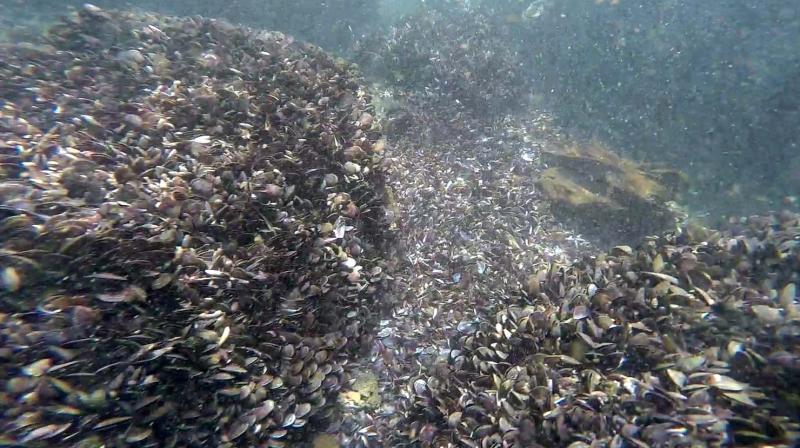Vizhinjam dredging an eco disaster
Damage to rocky reefs much worse than predicted earlier.

THIRUVANANTHAPURAM: The Vizhinjam port dredging has proved to be an ecological disaster for Kovalam as the damage to rocky reefs has been much worse than predicted earlier, say experts. The sea bed has become a graveyard for mussels, as per underwater photographs taken by divers based on the request by local fishermen. The accretion of sand on reefs has destroyed the habitat of hundreds of creatures, including lobsters. Of around 33 near-inshore rocky reefs (NIRR) found by studies conducted by the Kerala State Biodiversity Board (KSBB) between Kovalam and Mulloor, 11 have been fully covered by sand from the dredging site.
Apart from this, around three reefs have been partially covered and are perishing fast, reveals the underwater studies by an NGO named Friends of Marine Life (FML). “Mussels are bivalve shells that cannot move. They have openings on the shell through which nutrients are absorbed to the flesh inside. However, when underwater rocks are dredged, rocky powder goes inside and mussels die at Kovalam. Today the gaps between the rocky reefs are covered with the shells of dead mussels. There are no protests as the laymen cannot see the destruction underwater,” says Robert Panipilla of Friends of Marine Life (FML).
The nearest reef ecosystems to Kovalam are situated at Varkala and Enayam at Tamil Nadu which are situated around 50 km from here on both sides. Incidentally, a new port is planned at Enayam also. Though mussel gatherers of Kovalam are not considered eligible for compensation under the Vizhinjam project, 18 families here face loss of livelihood. “The fish workers in Kovalam area also are unique because it’s one of the few places where Harijans, who are not members of Dheevara community, work at sea,” he added.

